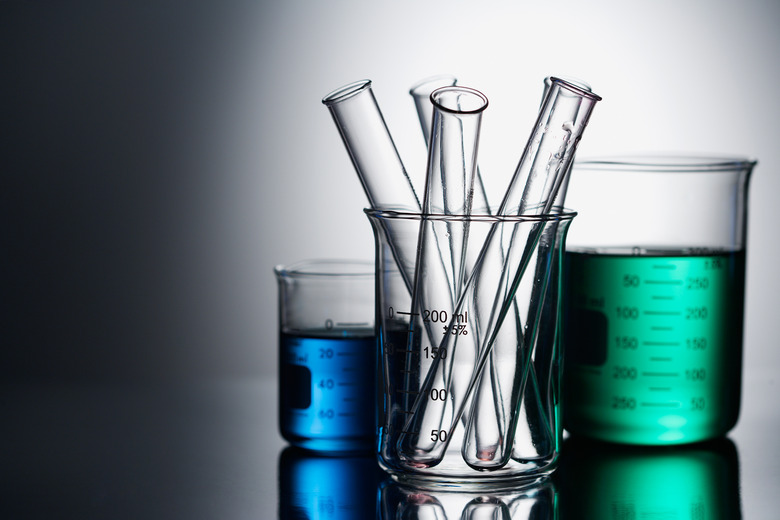How To Make Ozone Test Strips
Ozone in air can be detected with strips of a specially prepared paper, "Schoenbein" paper, that is coated with potassium iodide (KI) and corn starch. Water is added to the strips immediately before use. Schoenbein test strips turn blue-purple in the presence of ozone, the color being a rough indicator of ozone concentration. Iodine gas (I2) is generated when the potassium iodide (KI) is oxidized by ozone (O3). The color is produced as the iodine reacts with the corn starch. Following are the chemical reactions involved: 2KI + O3 + H2O > 2KOH + O2 + I2 (H2O is water, KOH is potassium hydroxide, O2 is ordinary oxygen). I2 + starch > blue-purple color
Step 1
Measure 3.4 fl oz. (100 ml) distilled water and add it to the beaker or glass container.
Step 2
Add 1 1/4 tsp. corn starch to the container.
Step 3
Heat the mixture on the hot plate, while stirring with the glass rod, until it thickens and clears.
Step 4
Remove the container from the hot plate.
Step 5
Add 1/4 tsp. potassium iodide, while stirring. Allow the solution to cool and thicken to a paste.
Step 6
Spread a coffee filter paper on the glass plate, then use the brush to apply paste evenly to both sides of the paper. Be careful.
Step 7
Place the glass plate on the hot plate, set to "warm" and allow the paper to dry thoroughly. The paper will dry faster in a microwave oven set at low power for about 45 seconds. If you use a microwave, be sure the glass plate is microwave-safe.
Step 8
Seal the strips, immediately, in the plastic bag or food container. Store them in a dark place.
Things Needed
- 8.8 fl oz. (200 ml) distilled water
- Small measuring cylinder or cup
- 8.4 oz (250 ml) glass beaker or other glass container
- Corn starch
- Hot plate
- Glass stirring rod
- Small bottle of potassium iodide
- Coffee filter paper
- Glass plate
- Small brush
- Scissors
- Sealing plastic bag or food container
TL;DR (Too Long; Didn't Read)
The scientific items you will need are available from a science supply store or catalog. Find information on how to use Schoenbein test strips in the resources section.
Warning
You must use distilled water, as any impurities could render the test strips useless. Potassium iodide can cause skin irritation. Wash your hands of any paste immediately. Prolonged exposure of Schoenbein strips to intense light (especially sunlight) or air, will ruin them. Work as quickly as possible.
Cite This Article
MLA
Merry, Michael. "How To Make Ozone Test Strips" sciencing.com, https://www.sciencing.com/make-ozone-test-strips-6945375/. 24 April 2017.
APA
Merry, Michael. (2017, April 24). How To Make Ozone Test Strips. sciencing.com. Retrieved from https://www.sciencing.com/make-ozone-test-strips-6945375/
Chicago
Merry, Michael. How To Make Ozone Test Strips last modified August 30, 2022. https://www.sciencing.com/make-ozone-test-strips-6945375/
